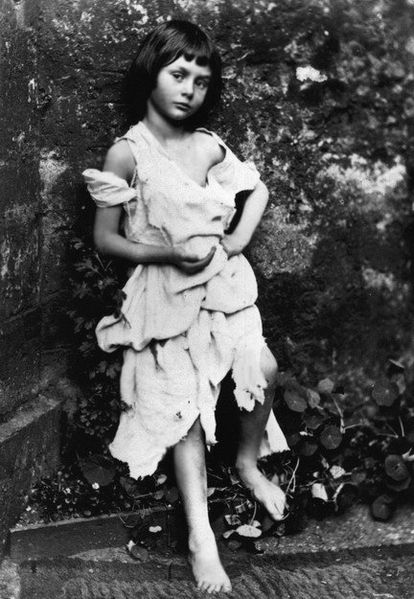It has been brought to my attention by photographer Vincenzo Vitale that I made an error in attribution in my December 26, 2014 post. The photograph “Children on a Spiral Staircase” was not taken by Cartier-Besson, but by his second wife photographer Martine Franck. (1938 – 2012). She was a well-known Belgian documentary and portrait photographer and like Cartier-Besson a member of Magnum Photos for over 32 years. She was also co-founder and president of the Henri Cartier-Bresson Foundation. It is, of course, embarrassing, and I am very grateful to Mr. Vitale for bringing this to my attention.
If you search the web you will find this photograph attributed to Cartier-Besson, all over the place. That is not a defense but illustrative of just how pervasive the internet can be in diseminating incorrect information. This is why I have gone back to the original posting and added this correction. It points very clearly to the need to be vigilant of the quality of information that we get from the web. Our cell phones are ever with us and whenever a question arises we look it up instantly, but are often oblivious to veracity.
In the present case, I believe that it is very important that this beautifully composed and crafted photograph be properly attributed, especially as it draws our attention back to Ms. Franck’s wonderful work. It seems appropriate to quote Martine Franck on photography:
“A photograph isn’t necessarily a lie, but nor is it the truth. It’s more of a fleeting, subjective impression. What I most like about photography is the moment that you can’t anticipate: you have to be constantly watching for it, ready to welcome the unexpected.”
What follows is the original and uncorrected post.
Instead of writing my blog this morning, I find myself endlessly searching the prolific work of Henri Cartier-Bresson (1908-2004). Cartier-Bresson is often credited with the “invention” of street photography and he was a founding member of Magnum. Often associated with Cartier-Bresson is the phrase “the decisive moment.” It is setting up your camera and then waiting patiently for that moment when the photograph is defined and ready to be snapped with a single press of the (Leica) shutter. So much of his work is in our collective consciousness as defining the twentieth century – and defining the meaning of “candid photography.” To pause for a few moments in the heart of Cartier-Bressons work is to learn to understand the meaning of phorography.
The image that I have chosen for today’s “Favorite Photographs, 2013” is Cartier-Bresson’s classic and well composed image of children on a spiral staircase. I believe, but am not sure, that this picture was taken in 1932. Perhaps a reader can inform me of the correct date and whether it has a title that Cartier-Bresson used.
Cartier-Bresson was a master at using lines, such as the spiral, in defining his pictures. And even in as static a subject matter as children peering down from a staircase, the spiral creates dynamics. But of course, with spirals there is something more. This is, of course, the “Golden Proportion,” the perfect division of a rectangle from an aesthetic point of view, and how by repeatedly dividing progressive rectangles by the “Golden Proportion” one obtains the Fibonacci spiral. This spiral occurs repeatedly in nature: in, for instance in the shell of the chambered nautilus and the horn of the ram. It creates a sense of natural perfection. This is the effect that Cartier-Bresson seeks here. He does not center his spiral at the center of the image but rather so as to divide the image by the Golden Proportion. The position is pretty much perfect* and you wouldn’t really have it any other way. I suppose that it is best stated in Cartier-Bresson’s own words:
“To take a photograph is to align the head, the eye and the heart. It’s a way of life.”
* I have measured this approximately. If you divide the vertical length of the image by the longer distance between the center of the spiral and the top of the image, you get a ratio of ~1.68, which is close enough for government work to the Golden Proportion of 1.62. The actual size of the photograph is 1.5, which, of course bows to the artistic approximation of the Golden Proportion namely the Golden Rule of Thirds.


